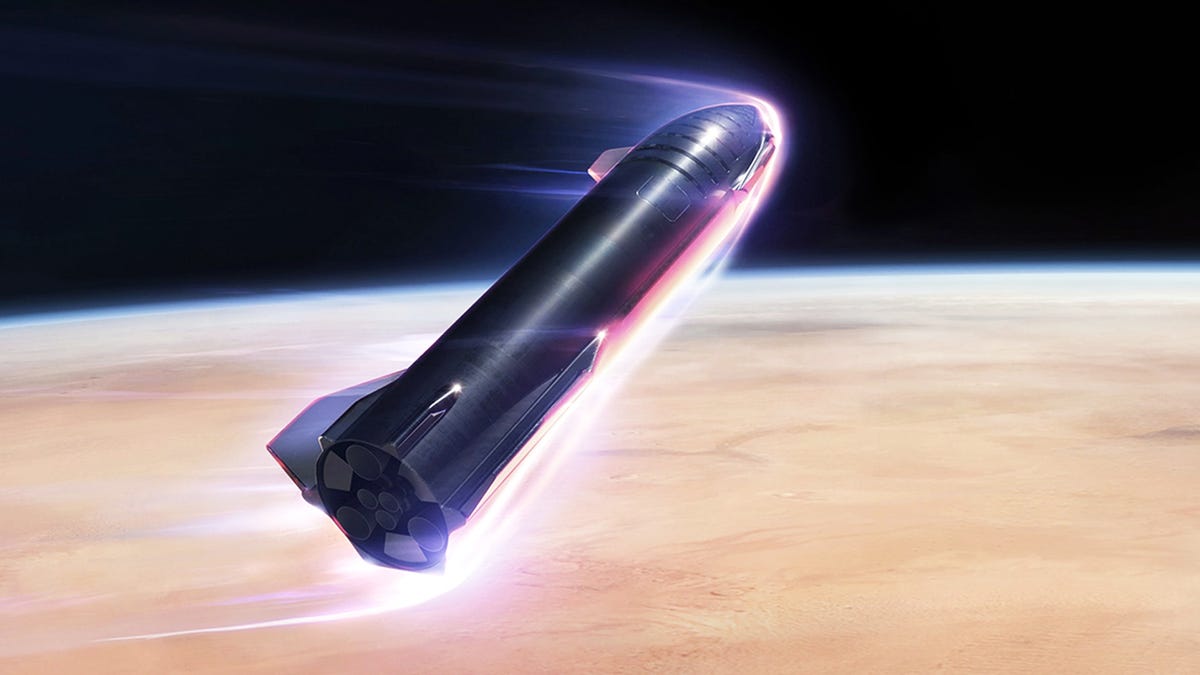Elon Musk Sets New Target for First SpaceX Starship Orbital Flight
The biggest of the billionaire's rockets could launch before school lets out in North America.

A rendering of Starship in space.
Starship might finally make it to space within the next few months -- or at least that's what SpaceX founder Elon Musk is currently shooting for.
The next-generation spacecraft is the vehicle NASA plans to use to send astronauts back to the surface of the moon, and Musk hopes it could put footprints on Mars by the end of the decade.
"First Starship orbital flight will be with Raptor 2 engines, as they are much more capable and reliable," Musk tweeted on Monday. "We'll have 39 flightworthy engines built by next month, then another month to integrate, so hopefully May for orbital flight test."
The Raptor 2 is designed to be over 25% more powerful than its predecessor.
First Starship orbital flight will be with Raptor 2 engines, as they are much more capable & reliable. 230 ton or ~500k lb thrust at sea level.
— Elon Musk (@elonmusk) March 21, 2022
We’ll have 39 flightworthy engines built by next month, then another month to integrate, so hopefully May for orbital flight test.
Musk previously expressed concern about SpaceX's pace of Raptor engine production, warning that bankruptcy could be possible if the company failed to increased its rate of engine manufacturing.
The CEO plans to use Starship to launch greater numbers of the company's Starlink broadband satellites at a time. Musk has said revenue from the global internet service is key to his greater ambition of sending Starship to Mars.
The switch to Raptor 2 engines also means the Super Heavy Booster and Starship prototypes that SpaceX has recently been testing at its Starbase development facility in Texas will likely not be the vehicles used for the first orbital mission. An updated booster and ship are expected to be rolled out to the test stand soon.
Starship full stack propellant load testing at Starbase pic.twitter.com/CFW7E51qdI
— SpaceX (@SpaceX) March 18, 2022
Once everything is ready, the plan is for Starship's first jaunt to space to involve blasting off from Starbase, making a trip to orbit and then coming in for a soft water landing off the coast of Hawaii. The booster is expected to return for a landing at an offshore landing pad in the Gulf of Mexico.
Engine production isn't the only hurdle that must be cleared before liftoff. SpaceX also is still waiting on the Federal Aviation Administration to complete an environmental review and issue a launch license for the orbital test mission. The FAA has pushed back its planned release date for its final environmental assessment a few times and currently expects to have it ready for the public on March 28.
The assessment will essentially determine whether the Starship launch can move forward as soon as possible or if more time is required for a more involved environmental impact review that could take several more months or longer to complete.

